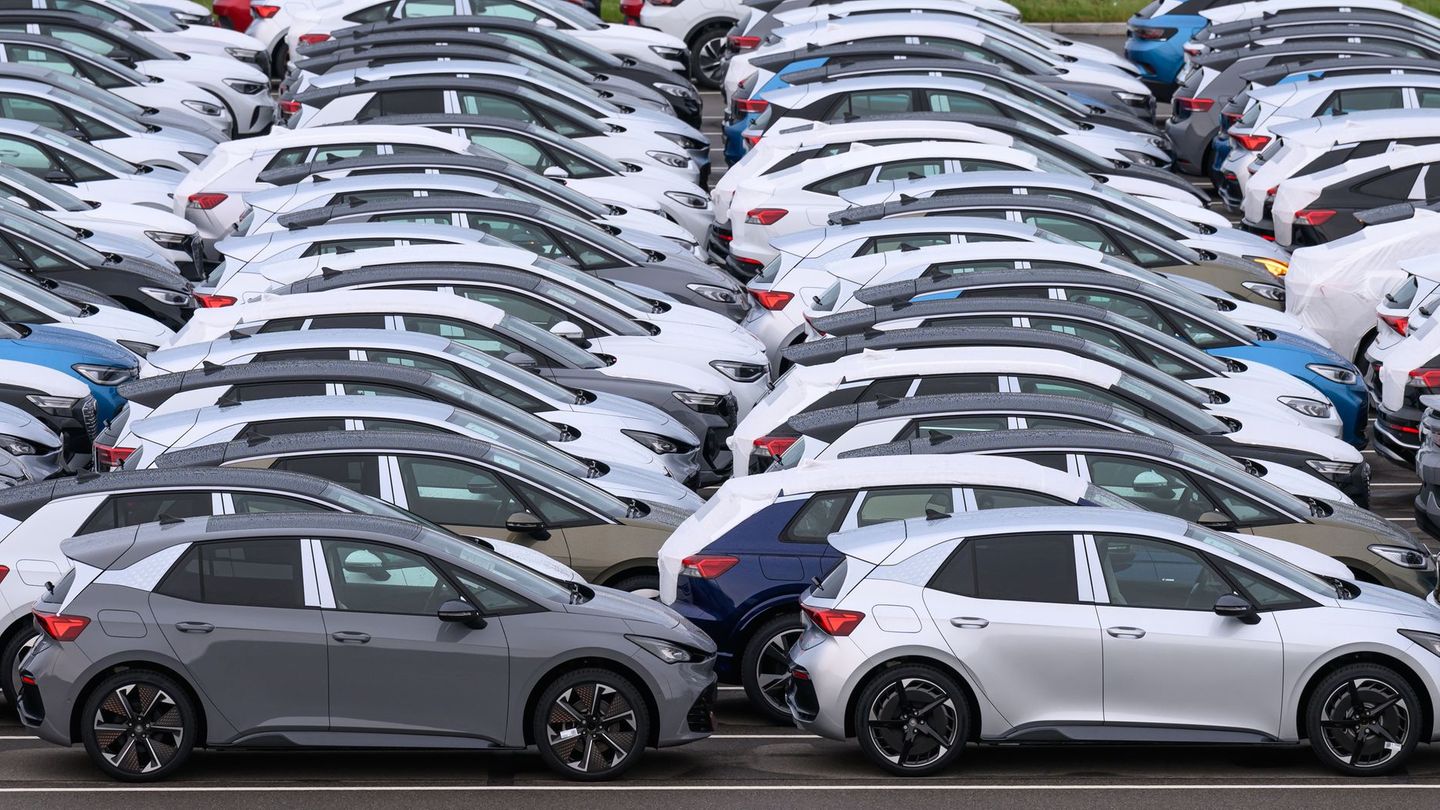Auto industry
Volkswagen sells fewer cars – China and Audi are slowing down
Copy the current link
2024 was a difficult year for the German auto industry, especially for VW and its struggling core brand. But another daughter becomes the problem child in the group.
The weak performance of Audi, the sluggish business in China, the lull in electric cars: the year 2024 also brought a group-wide decline in sales for the ailing car manufacturer Volkswagen. Worldwide, 2.3 percent fewer cars of all group brands were delivered than a year before, as the Wolfsburg-based company announced. The self-imposed goal of 9 million deliveries was still achieved – albeit very narrowly: 9.027 million vehicles were ultimately achieved.
“In a challenging market environment, we delivered a total of 9 million vehicles in 2024,” said CEO Oliver Blume. Audi sales manager Marco Schubert, who is also responsible for the department within the entire group, spoke of a “solid performance”. Especially in the final quarter, things went better than before. After sales were almost 3 percent in the red by the end of September, in the three months after that it was only 0.8 percent.
Slack in China and e-cars
The main burden for the group is the Chinese business and the slump in electric cars. In China, sales fell by almost ten percent, sales of electric cars fell by 3.4 percent worldwide, and in the USA by as much as 30 percent. Last year, 745,000 electric models from all Group brands were delivered worldwide. Only one in twelve new cars was purely electric.
“In China, competition continues to be determined by a massive price war,” explained Schubert, referring to what has long been the Wolfsburg-based company’s largest market. In the final quarter, however, they were almost at the same level as the previous year. And when it comes to combustion engines, Volkswagen continues to be the leader with a market share of over 20 percent.
When it comes to electric cars, which are booming in China and overall, the local challenger BYD has long since overtaken the market. New models from the cooperation with XPeng are now supposed to bring about a turning point for VW. In 2025, however, the market in China is expected to continue to be challenging, it was said.
On the German home market, the group lost 2.2 percent; in Western Europe as a whole, sales remained almost stable at minus 0.4 percent. However, there were noticeable increases in North America (6 percent) and South America (15 percent). In both regions combined, VW only sells just over half as many cars as in China alone.
The core brand VW in particular is suffering from high costs and low utilization of its plants. Shortly before Christmas, after a long struggle, the company and the union agreed on a restructuring program. Technical capacity in the German VW plants is to be reduced by over 700,000 vehicles. 35,000 jobs will be lost by 2030. The job cuts should take place without compulsory redundancies.
In the end, the stumbling core brand was less to blame for the decline in sales – but rather Audi. The Ingolstadt VW subsidiary recorded a 12 percent drop in sales. The core brand Volkswagen Passenger Cars, which accounts for more than half of all sales, fell by 1.4 percent, and Porsche by 3 percent. In contrast, Seat/Cupra (7.5 percent) and Skoda (6.9 percent) reported increases. However, this could not compensate for the declines in the other brands.
However, the decline across the group was smaller than for other manufacturers. At BMW and Mercedes-Benz, sales each shrank by around four percent in 2024. In 2023, the VW Group delivered more than 9.2 million vehicles of all brands, significantly more than the year before. VW had already given up its goal of exceeding this value by up to three percent in 2024 in September.
Europe’s largest car manufacturer is a long way from previous record values: in 2019, Volkswagen delivered almost 11 million deliveries, making it number one worldwide, ahead of Toyota. VW has now given up the fight for global market leadership. It was said that profitability was more important than the sheer number of units.
dpa
Source: Stern




